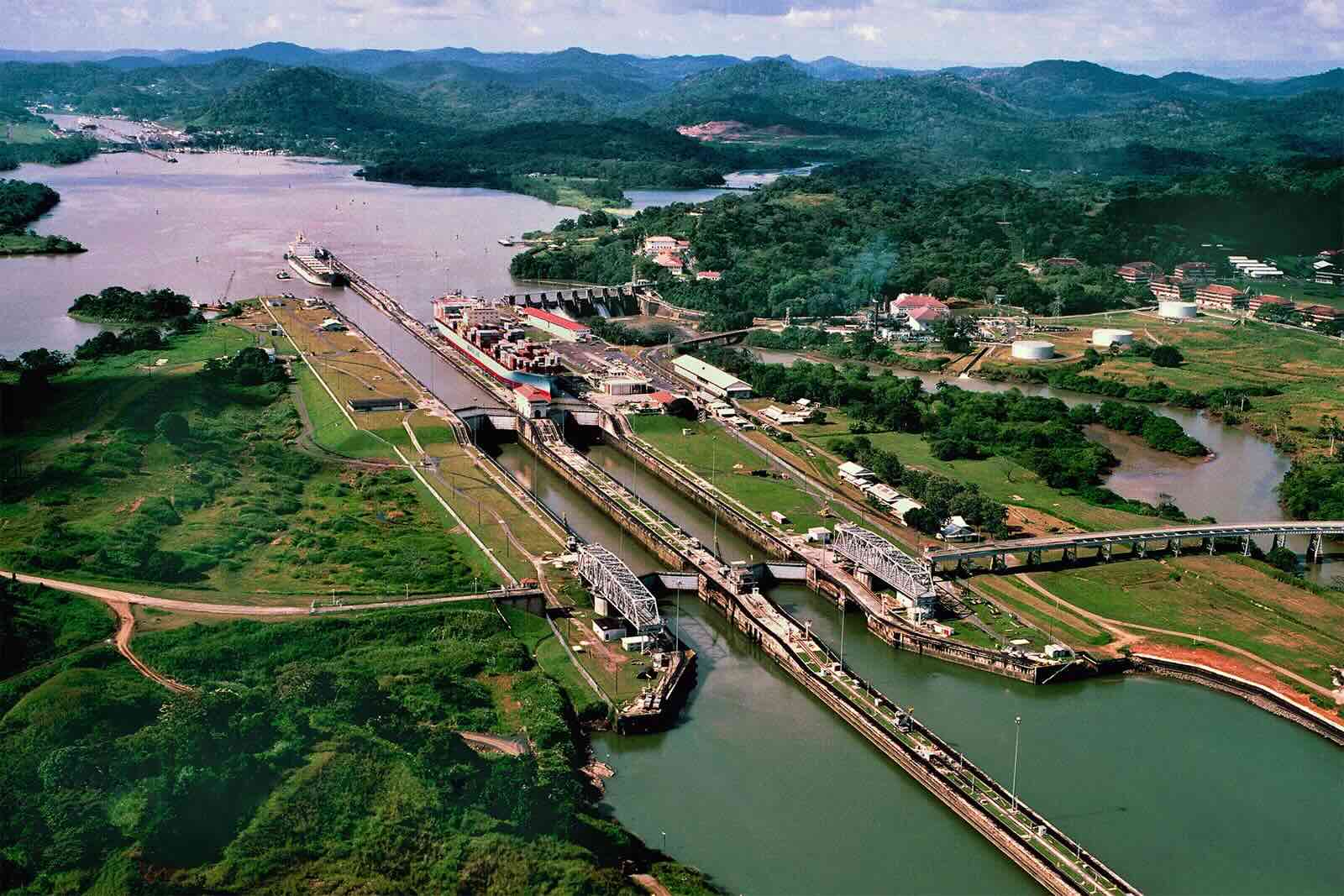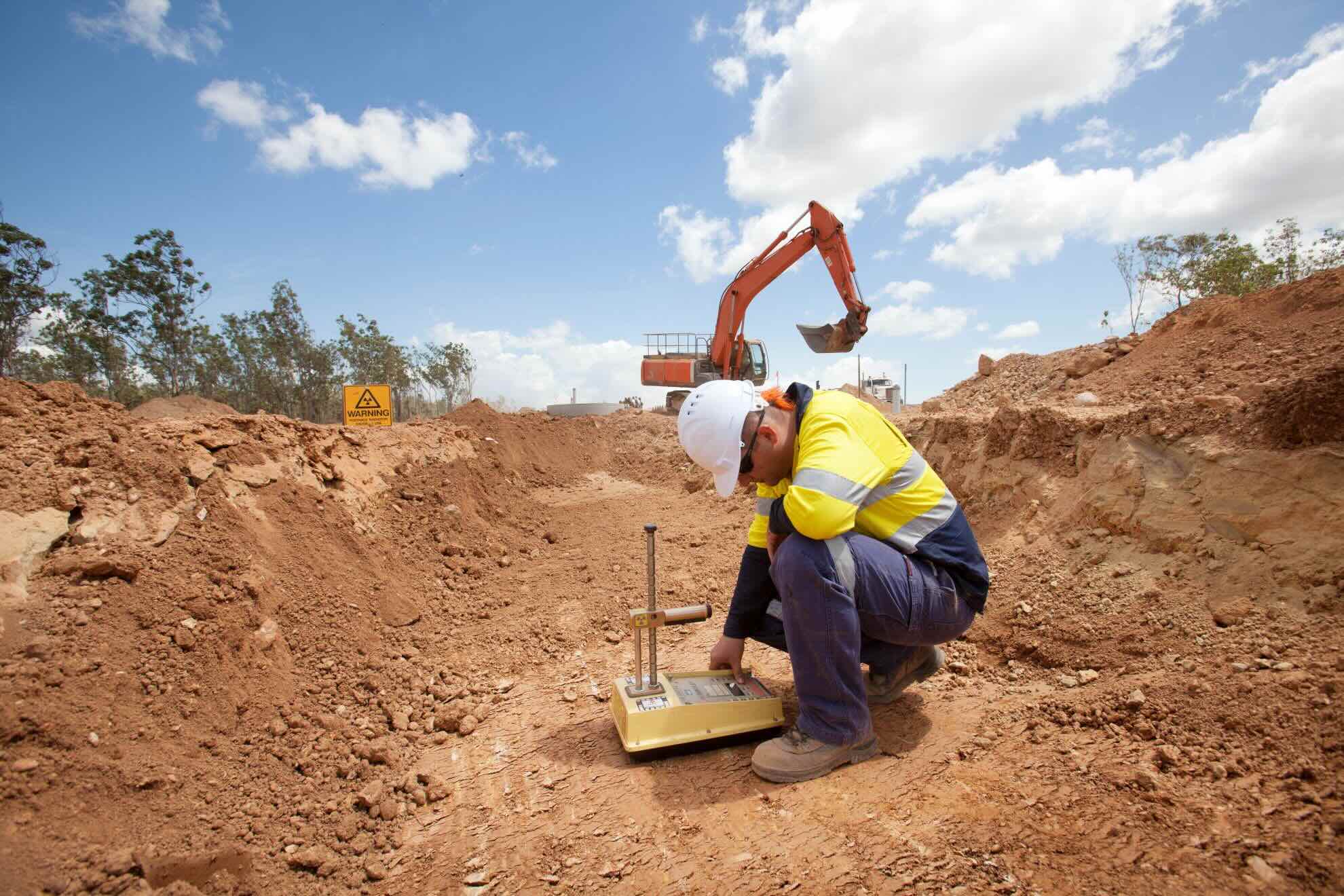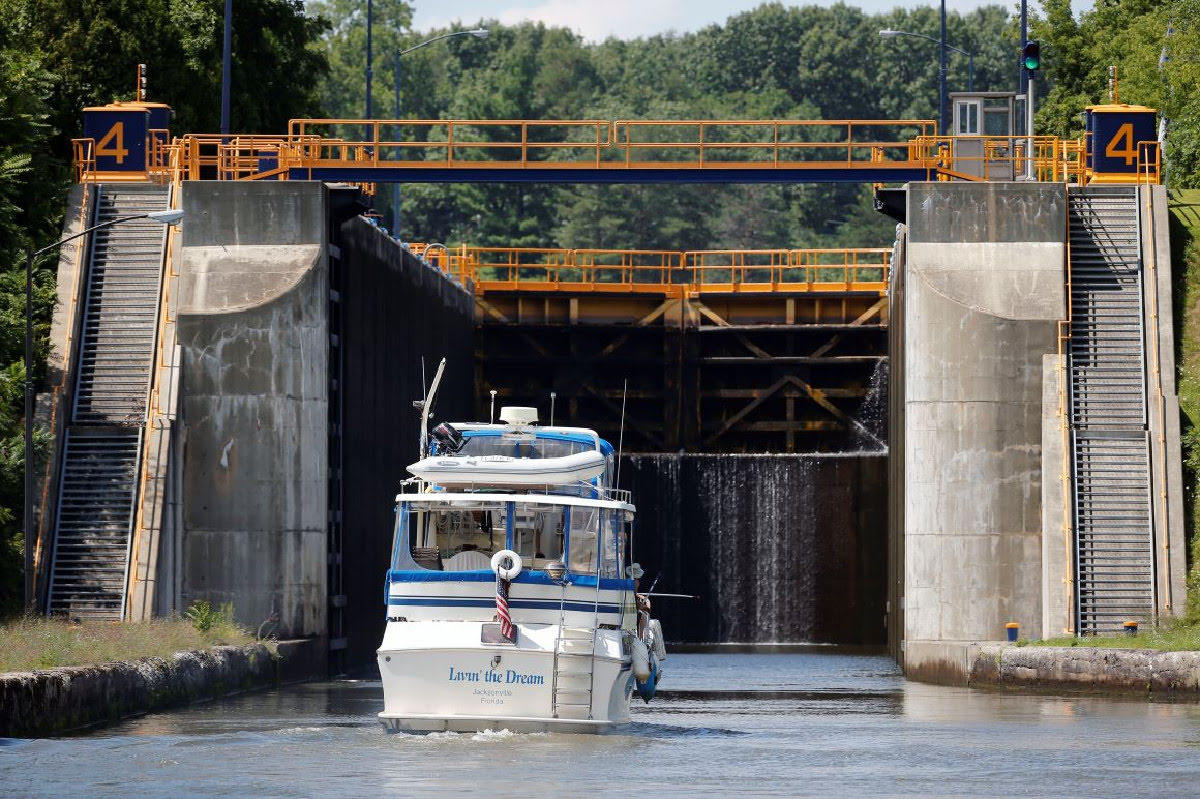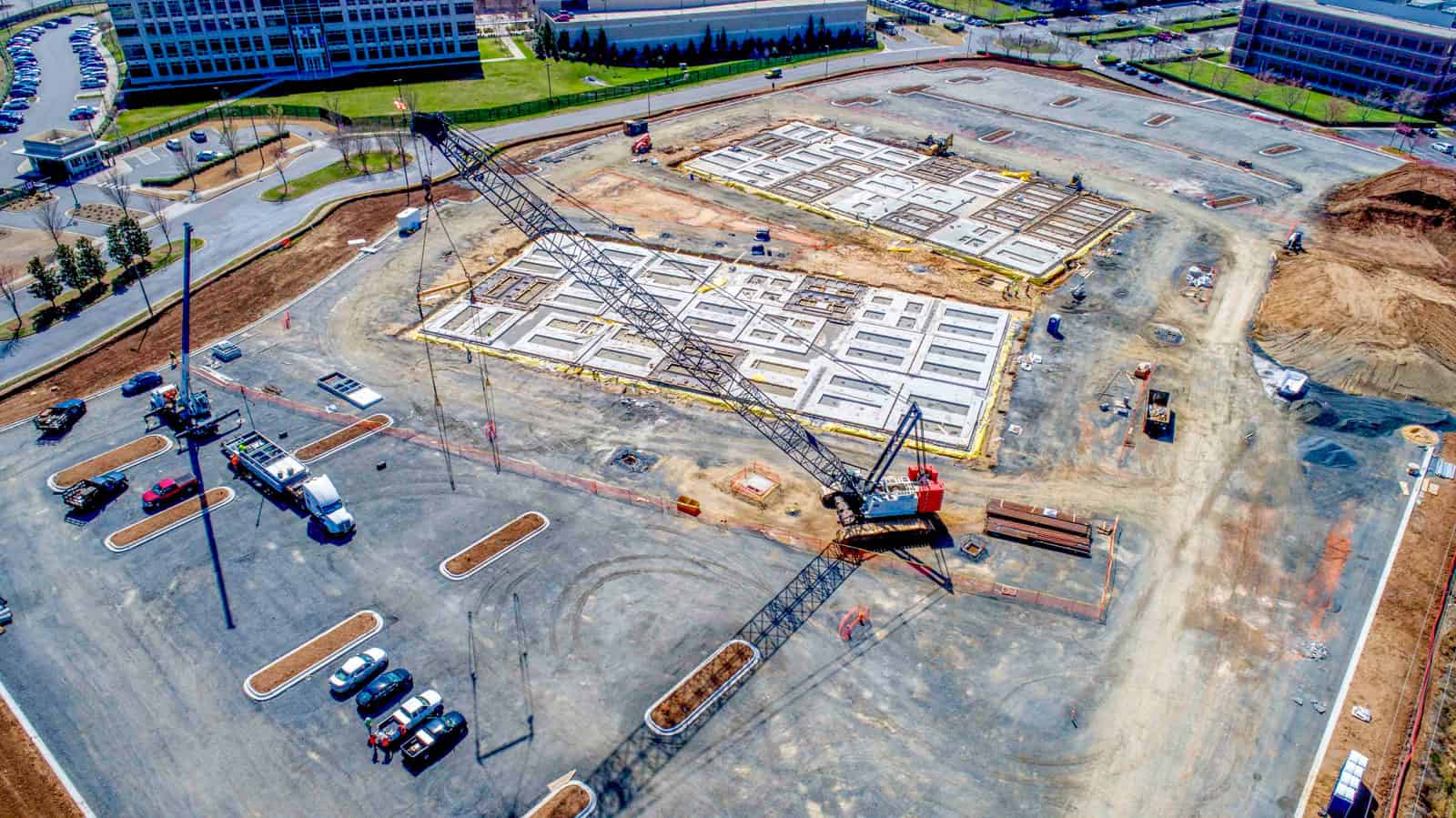Home>diy>Building & Construction>Why Was The Construction Of The Panama Canal So Important?


Building & Construction
Why Was The Construction Of The Panama Canal So Important?
Modified: December 7, 2023
Discover the significance of the building construction of the Panama Canal and its crucial role in global trade and transportation. Explore its historical impact and engineering marvels.
(Many of the links in this article redirect to a specific reviewed product. Your purchase of these products through affiliate links helps to generate commission for Storables.com, at no extra cost. Learn more)
Introduction
The construction of the Panama Canal is considered one of the most remarkable engineering feats in history. This incredible project, which began in 1904 and was completed in 1914, transformed the world of trade and transportation. The Panama Canal connects the Atlantic and Pacific Oceans, creating a vital shortcut for ships traveling between the east and west coasts of the Americas.
The significance of the Panama Canal cannot be overstated. It has had a profound impact on global trade, economies, and geopolitics, and continues to play a vital role in international commerce today. In this article, we will explore why the construction of the Panama Canal was so important and highlight the many factors that contributed to its success.
Key Takeaways:
- The construction of the Panama Canal revolutionized global trade by reducing travel distances, opening new trade routes, and stimulating economic growth for countries worldwide.
- The canal’s impact extends beyond economics, influencing geopolitical relations and environmental conservation, highlighting the need for sustainable practices in managing this vital artery of global trade.
Read more: Why Construction Is Important
Geography and Trade Importance
The geography of Panama played a crucial role in the trade importance of the Panama Canal. The isthmus of Panama is the narrowest point between the two continents, making it an ideal location for a waterway connecting the Atlantic and Pacific Oceans. Before the construction of the canal, ships had to travel around the southern tip of South America, adding significant time, cost, and risks to their journey.
By providing a shortcut, the Panama Canal drastically reduced travel distances and time for ships. This has had a tremendous impact on global trade patterns and economies. Ships from all over the world can now effortlessly travel between the Atlantic and Pacific, facilitating the movement of goods and reducing shipping costs. It has opened up new trade routes and increased commercial opportunities for nations worldwide.
The canal also holds strategic importance for global trade. It is a major route for international shipping, particularly for goods such as petroleum, chemicals, and agricultural products. More than 12,000 vessels pass through the canal each year, carrying around 200 million tons of cargo. The Panama Canal’s strategic location has made it a hub for global transportation, connecting major economies and facilitating trade between continents.
Furthermore, the canal has had a significant impact on the economies of the countries it serves. Panama, in particular, has benefited immensely from the canal’s construction and operation. The revenue generated from tolls and related services has contributed greatly to the country’s economy. It has also created numerous job opportunities and spurred economic growth, making Panama one of the fastest-growing economies in Latin America.
History and Early Attempts
The idea of creating a waterway across the isthmus of Panama dates back several centuries. Spanish conquistadors, including Vasco Núñez de Balboa, recognized the potential of such a route as early as the 16th century. However, it wasn’t until the 19th century that serious efforts were made to construct a canal.
One of the early attempts was made by the French in the 1880s under the leadership of Ferdinand de Lesseps, the mastermind behind the successful construction of the Suez Canal. The French faced numerous challenges, including tropical diseases like yellow fever and malaria, difficult terrain, and financial difficulties. Despite their efforts, the project ultimately failed, leaving behind a trail of bankruptcy and thousands of lost lives.
Following the French failure, the United States became interested in building a canal. The importance of a canal connecting the Atlantic and Pacific had become evident, especially after the Spanish-American War in 1898. In 1903, the United States supported the independence movement of Panama, which was then part of Colombia, and signed the Hay-Bunau-Varilla Treaty. This treaty gave the US control over the Panama Canal Zone, an area where the canal would be built.
The United States faced similar challenges as the French in terms of disease and difficult terrain. However, under the leadership of engineer George Washington Goethals, the US successfully overcame these challenges through innovations in engineering and medicine. They implemented strict mosquito control measures to combat diseases like yellow fever and malaria, and employed massive dredging and excavation operations to clear the way for the canal.
Construction of the Panama Canal officially began in 1904 and was completed a decade later in 1914. The canal was formally opened to traffic on August 15, 1914, with the passage of the SS Ancon, marking an extraordinary achievement in engineering and human perseverance.
The French Connection
The French venture into the construction of the Panama Canal in the late 19th century is a fascinating chapter in the history of the project. Led by the renowned French engineer Ferdinand de Lesseps, who had successfully overseen the construction of the Suez Canal, the French began their ambitious endeavor in 1881.
De Lesseps envisioned a canal that would connect the Atlantic and Pacific Oceans, providing a much-needed shortcut for global trade. However, the French faced a multitude of challenges that ultimately led to the failure of their project.
One of the significant challenges encountered by the French was the hostile tropical environment. The harsh climate and rampant outbreaks of diseases such as yellow fever and malaria took a heavy toll on the workforce. Thousands of workers fell ill or died, impeding progress and causing a decline in morale among the workers.
Financial difficulties also plagued the French project. The estimated cost of construction was vastly underestimated, leading to ballooning expenses. In addition, corruption and mismanagement further drained the project’s resources, exacerbating the financial strain.
Furthermore, the French faced engineering challenges due to the unstable terrain of the region. The presence of swamps, dense jungles, and the need for extensive excavation posed significant obstacles to progress. Despite the use of innovative machinery and engineering techniques for the time, the French struggled to overcome these hurdles.
Ultimately, the French expedition became mired in financial and logistical issues. In 1889, after eight years of intense labor with minimal progress, the project was declared bankrupt. The French company went under, leaving behind a trail of debt, broken dreams, and thousands of lost lives.
Despite the failure of the French, their efforts were not in vain. Lessons learned from their experience laid the groundwork for the eventual success of the Panama Canal. The French conducted extensive studies of the region, gathering valuable data about the geography, climate, and challenges that would prove invaluable to the subsequent American endeavor.
The French involvement in the construction of the Panama Canal stands as a testament to the immense difficulty and complexity of the project. It also serves as a reminder of the importance of careful planning, financial stability, and effective management in taking on such a monumental engineering feat.
United States Involvement
Following the failure of the French attempt to construct the Panama Canal, the United States emerged as a driving force behind the project. The strategic and economic benefits of a canal connecting the Atlantic and Pacific Oceans were clear, and the U.S. recognized the importance of taking on the challenge.
In 1903, the United States supported Panama’s independence movement from Colombia, paving the way for their involvement in the construction of the canal. The Hay-Bunau-Varilla Treaty granted the U.S. control over the Panama Canal Zone, a 10-mile-wide strip of land where the canal would be built.
The U.S. faced many of the same challenges as the French, such as the harsh tropical environment and the prevalence of diseases like yellow fever and malaria. Determined to overcome these obstacles, the United States made significant advances in engineering and medicine.
Under the leadership of American engineer George Washington Goethals, the construction effort saw the implementation of innovative engineering techniques. The use of massive dredging and excavation operations helped to clear the path for the canal. Lock systems were employed to raise and lower ships, allowing them to navigate through the different water levels of the canal.
Another critical aspect of the United States’ involvement was the implementation of strict public health measures. The eradication of disease-carrying mosquitoes through extensive fumigation and the improvement of sanitation and living conditions for workers were pivotal in the successful completion of the project.
The United States also made strategic use of the lessons learned from the French experience. The extensive studies and surveys conducted by the French provided valuable information about the geography, terrain, and challenges that the American engineers could utilize in their planning and execution.
Construction of the Panama Canal began in 1904 and proceeded with remarkable progress under American leadership. It involved the labor of tens of thousands of workers, including engineers, diggers, dredgers, and steam shovel operators, many of whom were from the Caribbean and were known as “Silver Roll” employees.
In 1914, the monumental task was finally completed, and the Panama Canal was officially opened to traffic. The United States managed the operation and administration of the canal until 1999 when it was handed over to Panama through the Torrijos-Carter Treaties.
The United States’ involvement in the construction and subsequent management of the Panama Canal has had a lasting impact on global trade and the geopolitical landscape. The canal’s completion solidified the United States’ position as a global power and facilitated closer economic ties between the East and West.
The success of the American endeavor in the Panama Canal stands as a testament to the determination, ingenuity, and perseverance of the individuals involved. It remains one of the most significant achievements in engineering and infrastructure development, shaping the course of international commerce and navigation to this day.
Read more: Why Is Home Security So Important
Technological Innovations
The construction of the Panama Canal required groundbreaking technological innovations to overcome the challenges posed by the region’s unique geography and climate. The successful completion of the canal was made possible by the implementation of several remarkable engineering advancements.
One of the key technological innovations was the use of massive dredging and excavation operations. Extensive removal of soil and rock was necessary to create the channel that would allow ships to traverse the isthmus. Powerful steam shovels and dredgers, some weighing up to 1,200 tons, were employed to facilitate this process. They excavated millions of cubic yards of material, creating the famous Gatun Lake and the Culebra Cut.
Lock systems were also a crucial innovation in the construction of the canal. Locks are large chambers with gates at each end that raise or lower ships to different water levels. The use of locks not only helped to control water flow and maintain a constant level in the canal but also facilitated the movement of ships through the varying elevations of the isthmus. This technology allowed the canal to accommodate ships of different sizes and ensure a smooth and safe passage.
The development of reinforced concrete was another significant technological breakthrough that played a vital role in the construction. Engineer Colonel George Washington Goethals, who oversaw the American effort, recognized the potential of this material. Reinforced concrete, a combination of concrete and steel reinforcement bars, was used to construct locks, dams, and other structures along the canal. This resilient material provided strength, durability, and resistance to the harsh tropical environment.
Engineering marvels such as the Gatun Dam and the Culebra Cut showcased the innovative use of reinforced concrete. The Gatun Dam created Gatun Lake, which serves as a crucial water reservoir for maintaining the water levels of the canal. The Culebra Cut, also known as the Gaillard Cut, involved the excavation through the challenging terrain of the Continental Divide and required significant engineering expertise to safely complete.
In addition to these technological advancements, the successful control of diseases like yellow fever and malaria was a pivotal achievement during the construction of the canal. The understanding of the role of mosquitoes in spreading these diseases led to the implementation of rigorous mosquito control measures. Fumigation, extensive drainage, and the improvement of sanitation and living conditions for workers significantly reduced the incidence of these diseases and improved the overall health and well-being of the workforce.
The combination of these technological innovations and advancements in medicine ensured the efficient and safe completion of the Panama Canal. The engineering feats achieved during its construction remain a testament to human ingenuity and the power of innovation in overcoming seemingly insurmountable obstacles.
The construction of the Panama Canal was important because it provided a crucial shortcut for ships traveling between the Atlantic and Pacific Oceans, saving time and money on long and dangerous voyages around South America.
Construction Challenges
The construction of the Panama Canal posed numerous challenges that required innovative solutions and the determination of those involved. Overcoming these obstacles was crucial for the successful completion of the canal and its transformation into an engineering marvel.
One of the major challenges faced during the construction process was the hostile tropical environment. The isthmus of Panama presented workers with extreme heat, high humidity, heavy rainfalls, and dense jungles. These conditions not only made work physically demanding but also contributed to a high risk of diseases such as yellow fever, malaria, and other tropical illnesses.
To combat the prevalence of diseases, extensive mosquito control measures were implemented. This involved fumigation, drainage of stagnant water sources, and the improvement of sanitation and hygiene practices. Through these efforts, the incidence of disease was significantly reduced, ensuring the well-being and productivity of the workforce.
The geographical features of the isthmus also presented significant challenges. The presence of swamps, rivers, and steep slopes complicated the excavation and construction processes. The Culebra Cut, in particular, posed a major hurdle. This narrow strip of land required the removal of millions of cubic yards of earth and rock, often through unstable terrain. The constant threat of landslides added to the complexity of the project.
To address this challenge, engineers implemented extensive slope stabilization techniques. They used retaining walls, terracing, and controlled blasting to ensure the stability of the cut. The development and deployment of powerful steam shovels and dredging equipment were also instrumental in the clearance of massive amounts of material, making way for the canal.
Another considerable challenge was the need to manage the water supply necessary for the canal’s operation. The creation of Gatun Lake, achieved by constructing the Gatun Dam, was a feat of engineering in itself. This artificial lake serves as a crucial reservoir, providing the necessary water levels for the locks and ensuring a consistent flow throughout the canal.
Logistical challenges were also prevalent during the construction. A large labor force, which at its peak reached around 40,000 workers, had to be organized and managed effectively. Transportation of materials, equipment, and personnel across the isthmus was a complex task. The creation of railways, roads, and infrastructure to support the construction effort was a necessity.
Financial concerns were yet another obstacle faced during the construction of the canal. The initial estimates for the cost of the project were significantly lower than the actual expenses incurred. Financial mismanagement, corruption, and the high mortality rate due to diseases added to the financial burden. The United States, after taking over the project from the French, had to address these financial challenges through careful planning and oversight.
Despite these formidable challenges, the determination, engineering expertise, and innovative techniques employed during construction ensured the successful completion of the Panama Canal. The project serves as a testament to human ingenuity and serves as a testament to the potential of human achievement.
Impact on Global Trade
The construction of the Panama Canal has had a profound impact on global trade since its completion in 1914. The canal’s strategic location and ability to connect the Atlantic and Pacific Oceans have transformed international commerce by creating a vital shortcut for shipping goods between the east and west coasts of the Americas.
One of the immediate effects of the Panama Canal has been the significant reduction in travel distances and time for ships. Prior to the canal’s construction, ships had to sail around the southern tip of South America, a journey that added thousands of miles and weeks of travel time. The canal shortened these routes, making global trade more efficient and cost-effective.
By bypassing the arduous journey around South America, the canal has opened up new trade routes and expanded economic opportunities for countries worldwide. It has facilitated the growth of industries such as manufacturing, agriculture, and energy, enabling countries to export their goods more easily and access new markets. Moreover, it has promoted regional integration and economic development in the Americas.
The Panama Canal’s impact on global trade is particularly significant for industries that rely on time-sensitive shipping, such as the transportation of perishable goods or just-in-time manufacturing supply chains. The canal’s efficient operation has allowed these industries to enhance their competitiveness and reduce costs by avoiding lengthy detours.
The canal is a critical route for the transportation of key commodities, including petroleum, liquefied natural gas, iron ore, grain, and other bulk goods. Its efficient transport infrastructure and capacity to accommodate large vessels have made it an essential artery for the global supply chain. The canal’s modernization efforts, such as the expansion project completed in 2016, further increased its capacity to handle larger vessels and fostered even more trade growth.
Furthermore, the Panama Canal’s impact extends beyond the economies directly served by the waterway. It has influenced global shipping patterns, with many countries adjusting their trade routes and logistical operations to take advantage of the canal’s efficiency. Ports and shipping companies worldwide have adapted their strategies to tap into the benefits offered by the canal’s expedited transit times, resulting in shifts in trade flows and greater connectivity between regions.
The canal has also stimulated investment and development in the surrounding regions. The growth of ports, logistics centers, and supporting infrastructure has created employment opportunities and boosted local economies. Additionally, it has attracted industries that rely on efficient shipping, such as manufacturing and distribution companies, leading to economic diversification and prosperity.
Overall, the Panama Canal has played a pivotal role in shaping global trade by providing a vital link between the Atlantic and Pacific Oceans. Its ability to reduce travel distances and time, enhance supply chain efficiency, and foster regional integration has made it a crucial component of the global trade network. The canal’s impact continues to evolve, fueling economic growth and influencing trade patterns in the ever-changing global marketplace.
Economic and Geopolitical Significance
The construction of the Panama Canal holds immense economic and geopolitical significance, transforming the dynamics of international trade and shaping the geopolitical landscape in numerous ways.
Economically, the canal has been a catalyst for economic growth, not only in Panama but also in countries around the world. It has provided a crucial trade route that has facilitated the movement of goods, reduced transportation costs, and enhanced overall efficiency in global supply chains. The shorter travel distances and time saved by using the canal have resulted in significant cost savings for businesses, making goods more affordable for consumers. This has stimulated trade and economic activity, benefiting both exporting and importing countries.
The canal’s importance in global trade has also made it a center for logistics and shipping services. The Port of Balboa on the Pacific side and the Port of Cristobal on the Atlantic side have become major transshipment hubs for cargo, attracting investments and fostering economic development in the surrounding areas. These ports, along with the supporting infrastructure and services, have created employment opportunities and generated revenue, contributing to the economic growth of Panama and the global economy.
Geopolitically, the control and management of the Panama Canal have had profound implications. For many years, the United States exerted considerable influence over the canal, which was a source of both empowerment and contention. The strategic control over the canal allowed the United States to project power and protect its interests in the Western Hemisphere.
However, the transfer of control over the canal to Panama in 1999 through the Torrijos-Carter Treaties marked a significant shift in the geopolitical landscape. It symbolized a transition towards greater sovereignty for Panama and an increased sense of autonomy in managing this vital waterway. The transfer of control has fostered diplomatic and trade relations between Panama and other countries, promoting a more balanced and inclusive approach to the canal’s administration.
The canal’s significance extends beyond the realm of trade and economics. It plays a crucial role in diplomatic relations, allowing for greater connectivity and interdependence between nations. The canal has been a symbol of cooperation and collaboration, as countries work together to ensure the smooth and efficient operation of this global trade route. International organizations such as the International Maritime Organization (IMO) and the United Nations (UN) have played a role in regulating and overseeing the canal’s operations, promoting transparency, and resolving conflicts.
Furthermore, the canal’s connection between the Atlantic and Pacific Oceans has had geopolitical implications in terms of security and defense. The ability to quickly deploy naval assets between the two bodies of water has been strategically significant for countries with maritime interests. The canal provides naval forces with expedited access and facilitates the movement of military personnel and equipment, ensuring a rapid response capability in times of crisis or conflict.
The economic and geopolitical significance of the Panama Canal cannot be overstated. Its impact on global trade, economic growth, and geopolitical relations is far-reaching. As it continues to evolve and adapt to the changing dynamics of international commerce, the canal will remain a critical artery for trade and a symbol of cooperation and interconnectedness in an increasingly interdependent world.
Read more: Why Construction Safety Is Important
Environmental Consequences
The construction and operation of the Panama Canal have had significant environmental consequences, altering the natural landscape and affecting various ecosystems in the region. While the canal has been instrumental in facilitating global trade, its development has caused both localized and broader environmental impacts.
One of the major environmental consequences of the canal’s construction was the alteration of the natural water flow and drainage patterns in the area. The creation of the canal and the accompanying Gatun Lake, formed by the Gatun Dam, resulted in the flooding of large sections of existing forests and wetlands. This led to the displacement and loss of diverse flora and fauna that had previously thrived in these ecosystems.
The introduction of non-native species into the region has also had a significant impact on the local biodiversity. Ships traversing the canal have inadvertently transported invasive species from different parts of the world to Panama. These invasive species can outcompete native species, disrupt the natural balance, and negatively impact the local ecosystem. Efforts are ongoing to monitor and mitigate the spread of invasive species in the canal and its surroundings.
The canal’s operations have also had implications for water management and conservation. The availability of freshwater is crucial for maintaining the water levels required for the canal’s operation. Gatun Lake, a vital source of water, requires careful management to balance the needs of the canal with the preservation of the surrounding ecosystem. Sustainable water management practices are essential to ensure the long-term viability of the canal while protecting the natural environment.
The construction of the canal involved extensive dredging and excavation operations, which resulted in the disruption of sediment flows and coastal habitats. The redistribution of sediments altered the natural sedimentation patterns along the coasts, impacting mangroves, coral reefs, and other sensitive coastal ecosystems. Efforts have been made through environmental restoration projects to mitigate the damage caused by sedimentation and preserve coastal ecosystems in the canal’s vicinity.
The canal’s impact on wildlife has been both positive and negative. Some species have adapted to the altered environment and found new habitats in and around the canal. However, others have experienced habitat loss and fragmentation, affecting their ability to migrate and reproduce. Measures such as wildlife corridors and habitat restoration initiatives are being implemented to support biodiversity conservation and mitigate the negative impacts on wildlife.
Efforts to minimize the environmental impacts of the canal have been ongoing. The Panama Canal Authority has implemented environmental management plans and monitoring programs to ensure compliance with environmental regulations and mitigate negative consequences. These initiatives include pollution control, waste management, the protection of sensitive areas, and the promotion of sustainable practices.
The environmental consequences of the Panama Canal highlight the importance of balancing economic development and environmental stewardship. While the canal has played a vital role in global trade, it is essential to prioritize sustainable practices and minimize the ecological footprint associated with its construction and operation. By implementing comprehensive environmental management strategies, monitoring progress, and adapting to evolving environmental challenges, we can strive to mitigate the impacts and ensure the long-term sustainability of this remarkable engineering feat.
Conclusion
The construction of the Panama Canal stands as a monumental achievement in human engineering and perseverance. The canal’s strategic placement and innovative design have transformed global trade, economies, and geopolitical dynamics. From its inception, the canal has played a vital role in facilitating the movement of goods and connecting the Atlantic and Pacific Oceans.
The Panama Canal’s impact on global trade cannot be overstated. It has significantly reduced travel distances and time for ships, making trade more efficient and cost-effective. The canal has opened up new trade routes, expanded economic opportunities, and fostered regional integration. Key industries, such as agriculture, manufacturing, and energy, have benefited from the canal’s ability to expedite the transportation of goods and reduce shipping costs.
The economic significance of the canal extends beyond the countries directly served by its waters. It has influenced global shipping patterns, stimulated investment and development in port cities, and attracted international businesses. The canal’s modernization efforts have increased its capacity and propelled continued growth in trade and commerce.
Geopolitically, the Panama Canal has been a symbol of cooperation and connectivity. Its transfer of control to Panama marked a transition towards greater sovereignty and autonomy. The canal’s strategic value has allowed countries to project power, protect maritime interests, and influence regional dynamics. The canal’s administration and management have brought together nations in diplomatic cooperation and coordination.
While the construction and operation of the canal have brought immense benefits, they have also had environmental consequences. Alterations to the natural landscape, the introduction of invasive species, and changes to water flow patterns have impacted ecosystems in the region. However, ongoing efforts are being made to mitigate these impacts through environmental management and restoration initiatives.
In conclusion, the Panama Canal remains a testament to human ingenuity, innovation, and perseverance. Its construction has revolutionized global trade, enhanced economic prosperity, and shaped geopolitical relations. The canal’s continued operation and management will require balancing economic growth with environmental stewardship. As countries and international organizations work together to ensure its sustainability, the Panama Canal will continue to be a vital artery of global trade, connecting nations, and fostering economic growth for generations to come.
Frequently Asked Questions about Why Was The Construction Of The Panama Canal So Important?
Was this page helpful?
At Storables.com, we guarantee accurate and reliable information. Our content, validated by Expert Board Contributors, is crafted following stringent Editorial Policies. We're committed to providing you with well-researched, expert-backed insights for all your informational needs.














0 thoughts on “Why Was The Construction Of The Panama Canal So Important?”